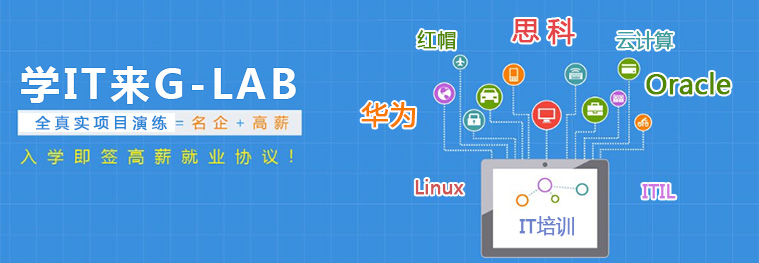HCIE-Routing & Switching V3.0实验知识点
一、Layer 2 Technologies
STP
1.STP
2.RSTP
3.MSTP
4.Loop guard
5.Root guard
6.BPDU guard
7.TC-BPDU attack guard
VLAN
1.Access port
2.Trunk port
3.Hybrid port
4.QinQ
5.Vlan Aggregation
6.Mux VLAN
7.Voice VLAN
Transparent bridge
1.Local Bridging
2.Remote Bridging
3.Integrated Bridging and Routing
4.VLAN ID Transparent Transmission
Link Aggregation, Eth-Trunk and IP-Trunk, Load-balance, LACP
1.Link Aggregation
2.LACP
Ethernet technologies
1.Speed and duplex
2.Ethernet, Fast Ethernet, Gigabit Ethernet, 10GE, 40GE, 100GE
3.Auto MDI/MDIX
4.Auto negotiation
5.Storm control
6.Unicast flooding control
Smart link
DLDP
Switched Port Analyzer (port-mirroring)
CSS/iStack
HDLC/IP-Trunk and PPP/MP
PPPoE
二、IPv4/v6 Unicast
IPv4 addressing, subnet, and VLSM
IPv4 tunneling and GRE
IPv6 addressing
ICMPv6
IPv6 functionality protocols
Migration techniques
1.Tunnelling techniques
2.Translation techniques
IPv4/v6 OSPF
1.Standard OSPF areas
2.Stub area
3.Totally stubby area
4.NSSA
5.Totally NSSA
6.LSA types
7.Adjacency on a point-to-point and on a multi-access network
8.Virtual-Link
9.LSA Filter
10.OSPF Fast Convergence
11.Stub Router
12.OSPF Authentication
IPv4/v6 IS-IS
1.NSAP
2.IS-IS Link-state packets
3.IS-IS area type
4.IS-IS circuit type
5.IS-IS TLV
6.IS-IS DIS and Pseudo node
7.IS-IS SPF
8.IS-IS LSP
9.IS-IS Metric
10.IS-IS Route Leaking
11.IS-IS MT
12.IS-IS Fast Convergence
13.IS-IS LDP Synchronization
14.IS-IS Authentication
IPv4/v6 BGP
1.IBGP and EBGP
2.BGP attributes
3.BGP synchronization
4.BGP routes Summarization
5.Route Dampening
6.BGP route reflector
7.BGP Community
8.BGP Peer Groups
9.BGP Security
10.Principles of Route Selection
Route Control
1.Filtering
2.IP Prefix list
3.Route Import(redistribution)
4.Route policy
5.Summarization
6.Preference
7.Other advanced features
MPLS三、MPLS VPN
1.MPLS network component (P, PE, CE)
2.MPLS label format
3.MPLS label encapsulation
4.MPLS label stack
5.MPLS label operation
6.Forwarding Equivalence Class
7.LDP
8.Label advisement model
9.MPLS LDP—Local Label Allocation Filtering
10.MPLS LDP Inbound/outbound Label Binding Filtering
MPLS Layer 3 VPN
1.MP-IBGP VPNv4 peering
2.VPN-instance
3.Route Distinguisher
4.Route Target
5.Route Target import/export
6.PE-CE–Dynamic Routes
7.PE-CE–Static Routes
8.Redistributing PE-CE routes into VPNv4
9.Redistributing VPNv4 routes into PE-CE routing table
10.MCE
Inter-AS MPLS VPN
1.Option A
2.Option B
3.Option C
四、IPv4/v6 Multicast
1.Multicast distribution tree
2.Multicast forwarding
3.Multicast RPF
4.PIM sparse mode
5.IGMP/MLD
6.IGMP Snooping/MLD Snooping
7.PIM RP, and BSR
8.Multicast tools, features, and source-specific multicast
五、Network Security
Access lists
uRPF
IP Source Guard
AAA
802.1x / NAC
NAT
1.Static NAT/NAPT
2.Dynamic NAT/PAT
3.Easy IP
4.NAT Server
5.Twice NAT
6.ALG
7.NAT Mapping
8.NAT Filtering
Device access control
IPsec
Traffic Suppression
Local Attack Defense
IP Address Anti-spoofing
ARP Security
DHCP Security
六、QoS
1.Classification
2.Traffic Policing
3.Traffic Shaping
4.Congestion Avoidance
5.Congestion Management
七、Network Management
1.Syslog
2.IP Service Level Agreement SLA
3.NetStream
4.NQA
5.SNMP
6.FTP
7.Telnet
8.SSH
八、Feature
1.VRRP
2.VGMP
3.Interface Backup
4.NTP
5.DHCP
6.BFD
7.NSF/GR
8.NSR
九、Planning/Troubleshoot a Network
1.Planning/Troubleshoot complex Layer
2 network 2.Planning/Troubleshoot complex Layer 3 network
3.Planning/Troubleshoot a network in response to application
4.Planning/Troubleshoot network services
5.Planning/Troubleshoot network security





